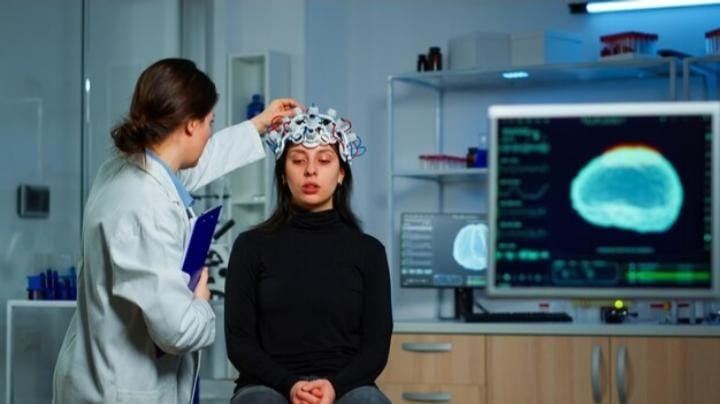In recent years, medical and scientific communities have become aware of rare neurological conditions that surprise both experts and the public. Such an emerging word has picked up the eyebrows and has a “laterainianuro“. Although there is still no extensive recognition in mainstream medical literature, the discussion of this situation has begun to achieve traction, especially about what can spread Laterathyo.
The purpose of this article is to detect everything that is currently known about this situation: what it is, its suspected causes, symptoms and – most importantly – whether it is infectious or able to spread. If you are new to this topic or just looking for clarity, you are in the right place.
Understand the Lunareneduro: What is this?
The term “sletredriianuro” is a complex and relatively new coin, which is believed to refer to a neurological disorder with an uncertain origin. The term manifests itself to combine “lightweight” (which can be natural or systemic origin), “drivers” (suggestions for processes related to drainage or fluid), and “Neuro” (related to the nervous system). Although it is not yet classified in mainstream neurology, medical forums and alternative health platforms have begun to refer to the lateraderanuros as a neurodyagent or neurinflammatory condition.
So far, most data on this situation is real, which makes scientific confirmation difficult. However, the symptoms associated with it have shown patterns that are in relation to examination and qualified.
Symptoms often reported
People who claim labrianianuro often share the following symptoms:
- Suddenly the memory misses
- Involuntary twitching
- Chronic fatigue and dizziness
- Mood instability (eg anxiety or irritability)
- Difficulty focusing (brain mist)
- Sensitive disorders (tingling, numbness, hypersensitivity)
Since these symptoms overlap with many known conditions such as multiple sclerosis, parkinson’s or fabromyalgia, it is difficult to determine whether Latoradrianuro is a separate unit or a wrong position under a new name.
Check the spread: Can Latradraianur be contagious?
Many people ask that the main question is whether Latudrianuro can spread from person to another?So far, there is no scientific evidence that there is no scientific evidence to prove that Lateudrianuro is contagious in the traditional sense, such as viruses or bacterial infections. However, some alternative hypotheses and principles suggest that some neurological diseases may have “priority” properties-something which means that they include faulty proteins that may induce abnormal changes in healthy cells. Creutzfeldt-Jakob disease and conditions that Alzheimer’s relationship has motivated some researchers to find out if non-communicable systems can still behave internally “spread-like” in the brain.
- In the case of the labriceduro:
- There are no indications that it can be transmitted through air, touch or physiological fluid.
- There is no outbreak pattern or cluster infection that usually defines an infectious disease.
However, a report on shared symptoms among people living in the same environment has raised questions about environmental risk or genetic trend.So when it cannot be spread “in classic meanings, other forms of spread – such as environmental toxins, stress triggers or family instincts .
Environmental factor and neurotoxicity
In some regions or groups, a possible explanation for the clear “spread” of lateraderanuro’s environmental neurotoxicity. Groups may have neurological symptoms whose lead or mercury, some pesticides, mildew or even long -term exposure to low -level radiation can cause neurological symptoms in groups.
In some anecdotes, families or communities that reported signs of Laterandrianuros were found to be nearby:
- Industrial
- High -voltage transmission lines
- Contaminated water source
- Old buildings with mold or asbestos problems
- While these cases do not confirm that the disease is continued
Can genetics play a role?
Another angle to consider is genetic sensitivity. Neurological status often runs in families, even when there is no direct infection. Epignant factors – which include how genes are expressed in response to the environment – explains why many members of the same family or society develop similar neurological symptoms over time.Some researchers suggest that Latriyadrianuro may be a genetic disposition that is triggered by external factors, such as exposure to trauma, diet or toxins.This will not make it contagious, but it will explain the pattern’s emergence of symptoms in groups.
Incorrect diagnosis or error?
Due to the obscurity of the term, many medical professionals claim that who is described as “laterainyuro”, it can only be a collection of existing neurological diseases incorrectly or poorly.
Here are some conditions that are often confused:
- Chronic fatigue syndrome (CFS/ME)
- Fibromyalgia
- Multil Sclerosis (MS)
- Autoimmune encephalitis
- Viral syndrome
What to do if you doubt you have Latredrieneuro
If you or someone near you is experiencing the symptoms mentioned above, there is a step to take here:
- Contact a neurologist or specialist. Do not rely on a completely internet -based diagnosis.
- Documents your symptoms thoroughly. Keep a daily magazine to track frequency and severity.
- Ask for extensive testing. MRI scans, blood tests, EMG and wooden points can help control other conditions.
- Check environmental factors. Evaluate your home or workplace for potential toxic risk.
The patient should join the legal groups. Web environments can provide support, but contact them with caution and important thinking.
Final insight: Latredrianuro is really a spread position?
After analyzing the available (Cabitbit Limited) information, it is clear that Latrianuro does not spread to infections such as flu or covid -19. There is no evidence of transfer of individual-to-person, airborne infection or blood improvement.
What we see, however, is a condition that appears in groups due to shared genetic, environmental or lifestyle-related factors. In this way, this may seem “scattered” in families or communities, especially in contact with uniform risks.
Although there is a lot of mysterious about the slutteriuro, the ongoing consciousness and examination can help validate whether it is a new neurological syndrome, by giving new names to the symptoms from known conditions, or a completely different case completely.
In the meantime, if you meet the word, you can contact it with both open ideas and significant research. Science is evolving, and what may seem vague today can be recognized tomorrow with the right research and lawyer.


